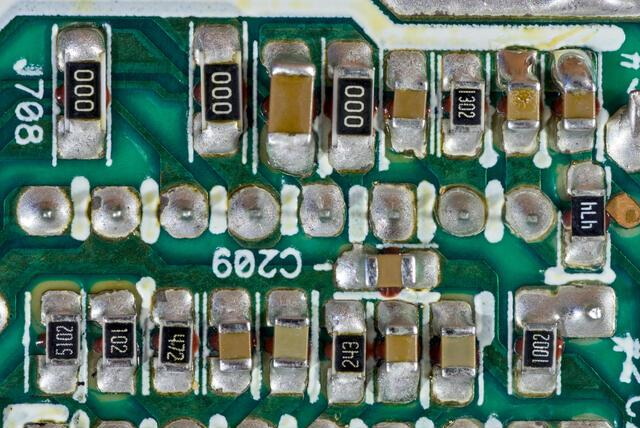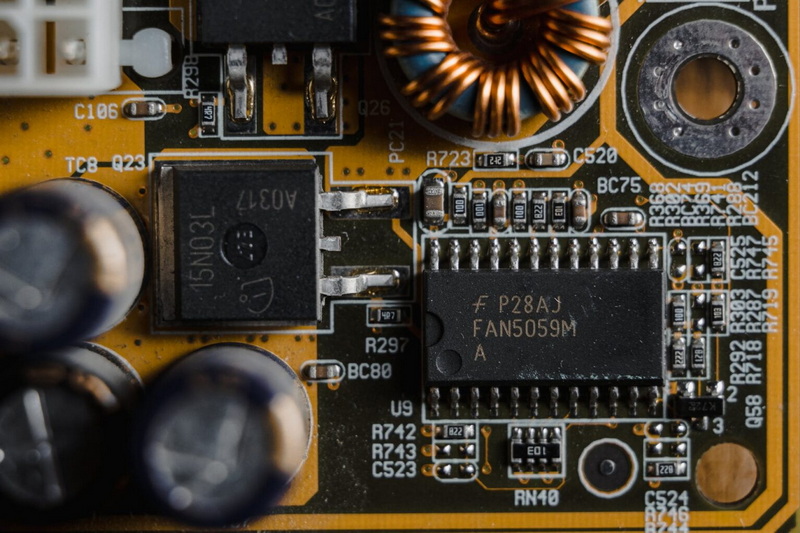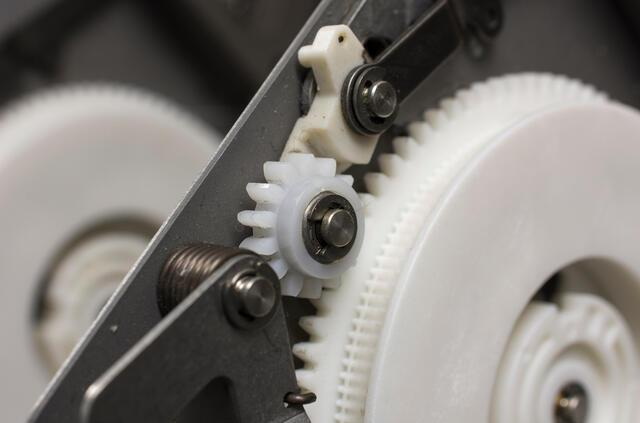Content Menu
● Understanding Surface Mount Technology (SMT)
>> History of SMT
● Components of SMT Machines
● The SMT Assembly Process
● Advantages of SMT Machines
● Types of SMT Machines
● Applications of SMT Machines
● Challenges in Using SMT Machines
● Future Trends in SMT Technology
● Conclusion
● FAQ
>> 1. What is an SMT machine?
>> 2. How does a pick-and-place machine work?
>> 3. What are the main advantages of using SMT?
>> 4. What types of machines are involved in an SMT line?
>> 5. In which industries is SMT commonly used?
● Citations:
Surface Mount Technology (SMT) machines are essential tools in the manufacturing of electronic devices, enabling the efficient assembly of printed circuit boards (PCBs). This technology has revolutionized the electronics industry by allowing components to be mounted directly onto the surface of PCBs, which enhances production speed and reduces costs. In this article, we will explore the various aspects of SMT machines, including their types, processes, advantages, challenges, and applications.

Understanding Surface Mount Technology (SMT)
Surface Mount Technology is a method for assembling electronic components onto PCBs. Unlike traditional through-hole technology, where components are inserted into holes drilled into the board, SMT allows for components to be soldered directly onto the surface. This innovation significantly improves manufacturing efficiency and has become the standard in modern electronics production.
History of SMT
The origins of SMT date back to the 1960s when IBM developed it for small-scale computers. However, it did not gain widespread adoption until the mid-1980s when advancements in automation and component design made it more viable. The introduction of smaller and more efficient components allowed manufacturers to produce compact devices with enhanced functionality. Today, SMT is integral to producing a wide range of electronic devices, from smartphones to automotive systems.
Components of SMT Machines
SMT machines typically consist of several key components that work together to automate the assembly process:
- Solder Paste Printing Machines: These machines apply solder paste onto the PCB pads using a stencil. The solder paste consists of tiny metal particles mixed with flux, which helps in creating strong electrical connections when heated.
- Pick-and-Place Machines: Often referred to as SMT placement machines, these robotic devices accurately position surface mount devices (SMDs) onto the PCB. They use vacuum suction or mechanical grippers to pick up components from feeders and place them in designated locations.
- Reflow Soldering Machines: After components are placed on the PCB, they are subjected to heat in a reflow oven. This process melts the solder paste, creating permanent electrical connections between the components and the PCB.
- Inspection Machines: Automated Optical Inspection (AOI) systems check for defects in component placement and solder joints to ensure quality control before final assembly.
- Cleaning Machines: Post-soldering cleaning machines remove any residual flux or contaminants from the PCB surface, ensuring optimal performance and reliability.
The SMT Assembly Process
The SMT assembly process can be broken down into several stages:
1. Material Preparation: This initial step involves selecting and preparing both the PCB and SMDs. The PCB usually features flat pads without holes for mounting components.
2. Solder Paste Printing: A stencil is used to apply solder paste accurately onto the pads of the PCB. The amount of paste must be precise; too much or too little can lead to faulty connections.
3. Component Placement: The pick-and-place machine picks up SMDs from feeders and places them onto the solder paste-coated pads on the PCB.
4. Reflow Soldering: The assembled PCBs are passed through a reflow oven where they are heated to melt the solder paste, forming solid connections between the components and pads.
5. Inspection: After soldering, AOI systems inspect the boards for defects such as misaligned components or insufficient solder joints.
6. Final Assembly: Once inspected and verified, additional processes may include cleaning, testing, and packaging of the finished products.
7. Testing: Functional testing is conducted to ensure that all electronic functions operate correctly before final delivery to customers.
Advantages of SMT Machines
SMT machines offer numerous benefits that contribute to their widespread use in electronics manufacturing:
- Higher Assembly Speeds: Automation allows SMT machines to place thousands of components per hour, significantly increasing production rates compared to manual assembly methods.
- Reduced Size and Weight: SMDs are generally smaller than their through-hole counterparts, allowing for more compact designs and lighter products. This reduction in size also enables manufacturers to create multi-layer PCBs that enhance functionality without increasing footprint.
- Improved Performance: With shorter lead lengths between components, SMT reduces inductance and enhances high-frequency performance in electronic circuits. This characteristic is particularly beneficial for applications requiring high-speed data transmission.
- Cost-Effectiveness: The efficiency gained through automation reduces labor costs and material waste, making SMT a more economical choice for manufacturers. Additionally, lower material costs associated with smaller components further enhance profitability.
- Greater Design Flexibility: Designers can utilize both sides of a PCB for component placement, leading to innovative layouts that maximize functionality within limited space. This flexibility allows for more complex circuit designs that can accommodate advanced technologies like IoT devices.
Types of SMT Machines
There are various types of SMT machines tailored for specific tasks within the assembly process:
- Solder Paste Printers: Essential for applying solder paste accurately on PCBs before component placement. These printers can vary in size from small manual units to large automated systems capable of handling multiple PCBs simultaneously.
- Pick-and-Place Machines: The heart of any SMT line; these machines ensure precise placement of SMDs on PCBs. They can handle a wide variety of component sizes and shapes due to their adjustable nozzles and advanced vision systems.
- Reflow Ovens: Critical for melting solder paste and securing component connections during assembly. Different types include convection ovens, infrared ovens, and vapor phase ovens, each suited for specific applications based on thermal requirements.
- Inspection Systems: Automated systems that verify component placement accuracy and solder joint quality post-soldering. These systems can include AOI machines as well as X-ray inspection systems for detecting hidden defects in multi-layer assemblies.

Applications of SMT Machines
SMT technology is widely used across various industries due to its efficiency and effectiveness:
- Consumer Electronics: Smartphones, tablets, laptops, smartwatches, and other personal devices heavily rely on SMT for compact design and high performance. The rapid pace of innovation in this sector demands efficient manufacturing processes that SMT provides.
- Automotive Industry: Modern vehicles incorporate numerous electronic systems that benefit from SMT's reliability and efficiency. Features such as advanced driver-assistance systems (ADAS), infotainment systems, and engine control units rely on precise electronic assemblies produced through SMT processes.
- Medical Devices: Precision electronics used in medical equipment often utilize SMT due to its ability to produce small yet complex assemblies that meet stringent regulatory standards for safety and reliability.
- Telecommunications: High-speed communication devices require reliable assembly methods like SMT for optimal performance in products such as routers, switches, and cellular base stations.
- Industrial Equipment: Many industrial applications utilize SMT technology for control systems that manage machinery operations efficiently while ensuring durability under challenging conditions.
Challenges in Using SMT Machines
While there are many advantages to using SMT machines, manufacturers also face challenges:
- Initial Investment Costs: The cost of acquiring advanced SMT machinery can be high; however, it pays off over time through increased efficiency. Manufacturers must carefully evaluate their production needs against potential ROI when investing in new equipment.
- Complexity in Design: Designing PCBs for SMT requires specialized knowledge to ensure that components can be placed correctly without interference. Engineers must consider factors such as thermal management, signal integrity, and mechanical stability during design phases.
- Quality Control Issues: Ensuring consistent quality across large production runs necessitates robust inspection processes to catch defects early on. Implementing effective quality assurance measures is critical in maintaining product reliability while minimizing waste due to rework or scrap.
- Component Availability: As technology evolves rapidly, some older SMDs may become obsolete or difficult to source. Manufacturers must stay updated with industry trends while maintaining flexibility in their supply chains to adapt quickly if necessary.
Future Trends in SMT Technology
As technology continues to advance at an unprecedented rate, several trends are shaping the future landscape of SMT manufacturing:
- Automation & AI Integration: The incorporation of artificial intelligence (AI) into manufacturing processes is expected to enhance efficiency further by optimizing machine operations based on real-time data analysis while reducing human error rates significantly through predictive maintenance strategies.
- Miniaturization & Advanced Packaging Techniques: As consumer demand grows for smaller devices with enhanced capabilities—such as wearables—manufacturers will increasingly adopt advanced packaging techniques like System-in-Package (SiP) solutions that integrate multiple functions within single packages using sophisticated materials science innovations alongside traditional SMT methods effectively merging different technologies seamlessly together without compromising performance metrics whatsoever!
- Sustainability Initiatives: With growing environmental concerns surrounding electronic waste (e-waste), manufacturers are focusing on sustainable practices throughout their production lines—from sourcing eco-friendly materials down through recycling programs aimed at reducing landfill contributions associated with obsolete electronics disposal practices overall!
Conclusion
In conclusion, Surface Mount Technology (SMT) machines have transformed electronics manufacturing by enabling faster production rates, reducing costs, improving product performance while enhancing design flexibility significantly! Their role in automating processes such as solder paste application/component placement/reflow soldering makes them indispensable within modern manufacturing environments today! As technology continues evolving rapidly—so too will these innovative solutions adapt accordingly—meeting new challenges while enhancing efficiency across various industries!

FAQ
1. What is an SMT machine?
An SMT machine is an automated device used in electronics manufacturing that places surface mount devices (SMDs) onto printed circuit boards (PCBs).
2. How does a pick-and-place machine work?
A pick-and-place machine uses robotic arms equipped with suction cups or grippers to pick up electronic components from feeders and accurately place them onto designated locations on a PCB.
3. What are the main advantages of using SMT?
The main advantages include higher assembly speeds, reduced size and weight of components, improved performance due to shorter lead lengths, cost-effectiveness through automation, and greater design flexibility.
4. What types of machines are involved in an SMT line?
An SMT line typically includes solder paste printers, pick-and-place machines, reflow ovens, inspection systems for quality control as well as cleaning machines post-soldering operations!
5. In which industries is SMT commonly used?
SMT is commonly used in consumer electronics (smartphones/laptops), automotive applications (ADAS/infotainment), medical devices (precision equipment), telecommunications equipment (routers/switches), industrial equipment managing machinery operations efficiently!
Citations:
[1] https://www.wevolver.com/article/smt-process
[2] https://www.hayawin.com/resources/a-guide-to-smt-machines-what-they-are-and-how-to-choose.html
[3] https://en.wikipedia.org/wiki/Surface-mount_technology
[4] https://vicoimaging.com/smd-and-smt-comprehensive-guide/
[5] https://jamindopcba.com/advantages-of-surface-mount-technology/
[6] https://www.ablcircuits.co.uk/blog/what-is-the-smt-process-and-why-should-oems-care/
[7] https://www.raypcb.com/smt-machine/
[8] https://en.wikipedia.org/wiki/SMT_placement_equipment
[9] https://ngpd.nikon.com/en/glossary/pick-and-place-machine.html
[10] https://insightsolutionsglobal.com/smt-surface-mount-technology-manufacturing-process/




















